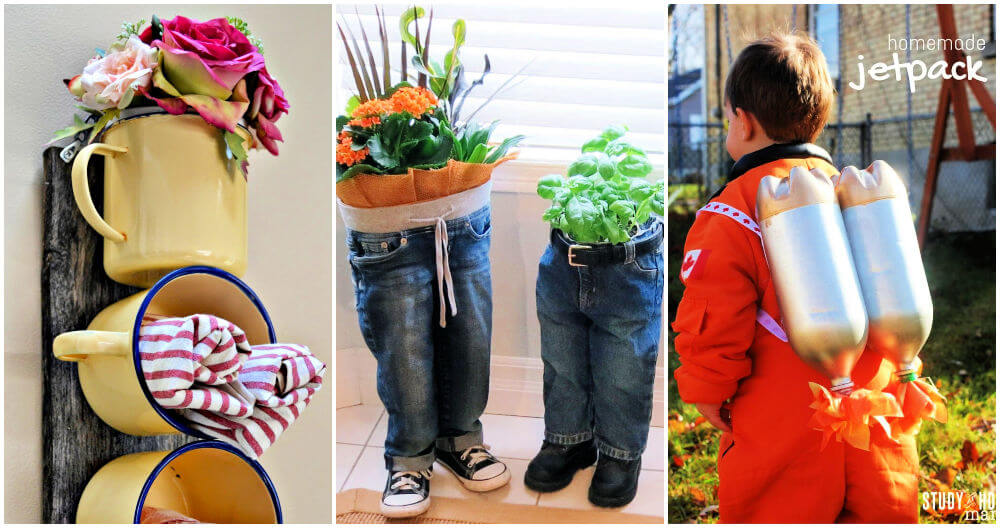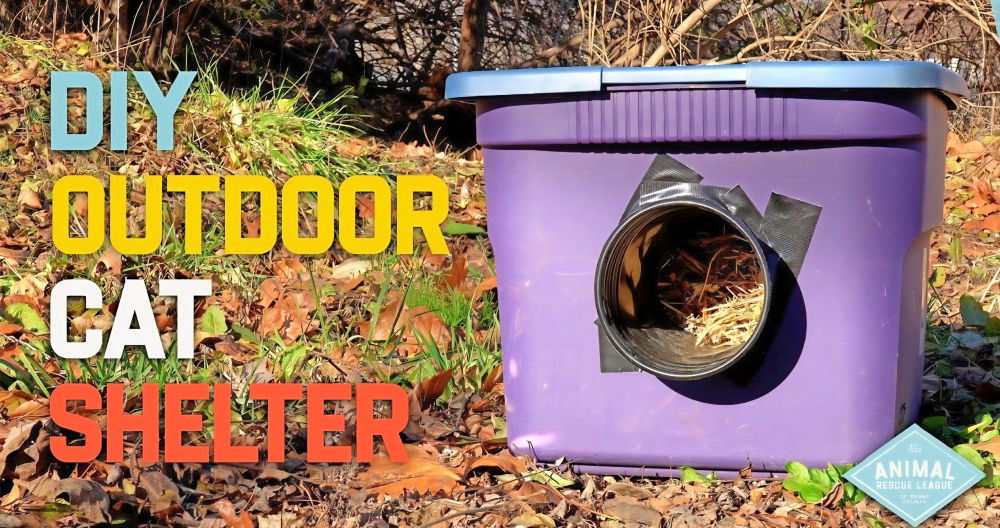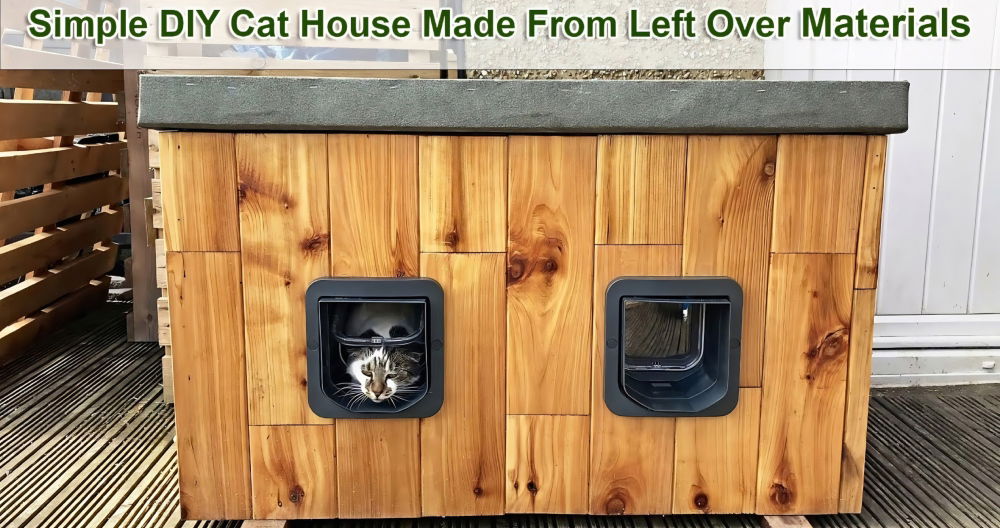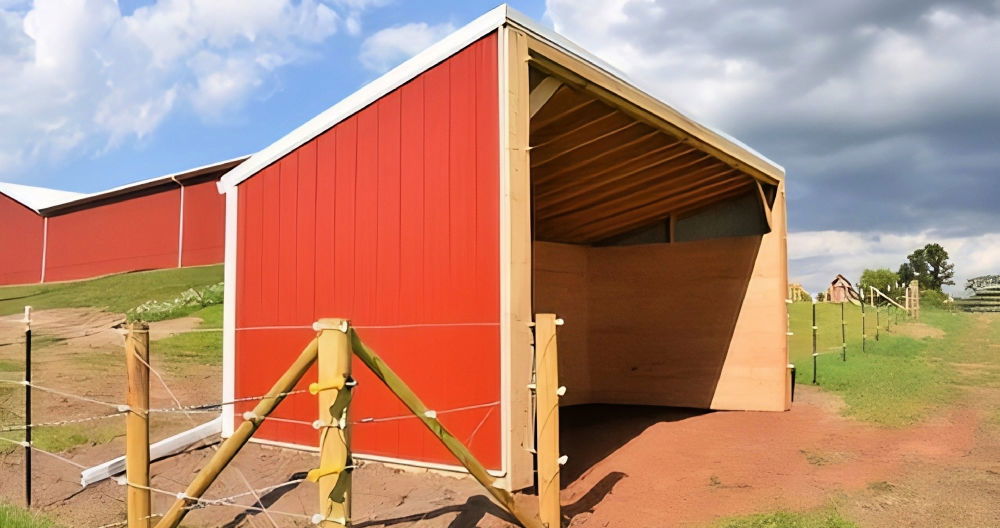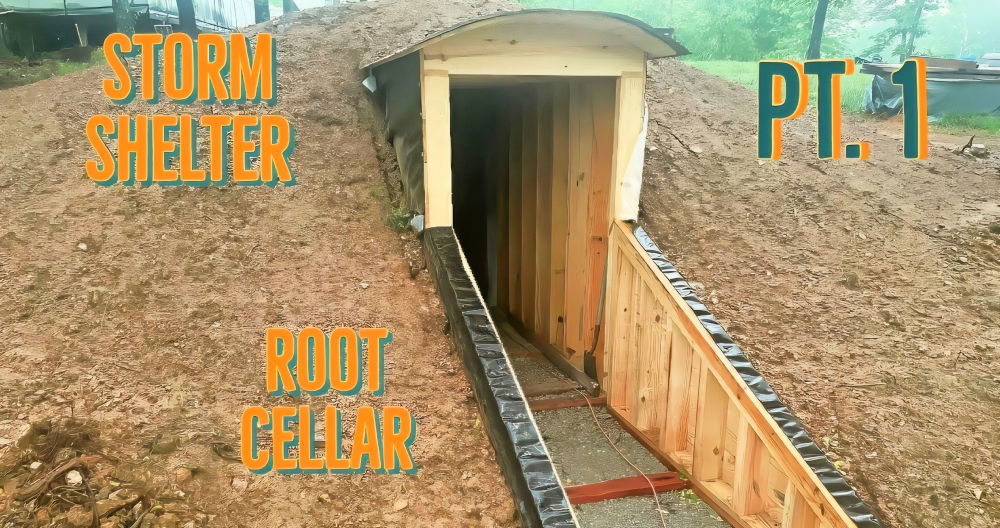Building a cheap DIY goat shelter can be a simple and budget-friendly solution for those raising goats. Using recycled materials not only cuts costs but also benefits the environment. With some creativity, you can craft a sturdy, safe, and comfortable shelter for your goats. This guide will help you plan and build your own shelter, offering practical tips on gathering materials and setting up a functional space for your animals.
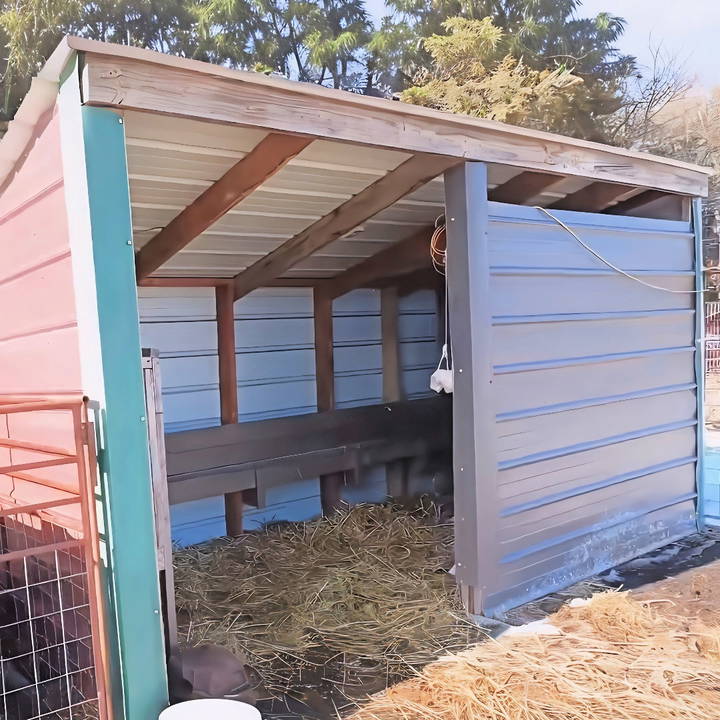
Climate Considerations and Shelter Placement
When building a goat shelter, it's essential to consider your local climate and choose an appropriate location. Here are practical tips to build a comfortable and effective shelter for your goats:
1. Understanding Your Climate
Before you start constructing the shelter, assess your region's climate. Different climates require specific design considerations:
Hot Climates:
- Shade: In hot areas, prioritize providing ample shade. Position the shelter under existing trees or use materials that block direct sunlight.
- Ventilation: Ensure good airflow to prevent heat buildup. Install vents or windows to allow hot air to escape.
- Cooling Techniques: Consider misting systems or fans to keep goats cool during scorching weather.
Cold Climates:
- Insulation: Cold climates demand proper insulation. Use straw, hay, or foam board insulation to retain warmth.
- Draft Prevention: Seal gaps and cracks to prevent drafts. Cold air can lead to health issues for goats.
- Orientation: Face the shelter away from prevailing winds to minimize exposure.
Rainy Climates:
- Drainage: Elevate the shelter floor slightly to prevent water accumulation. Use materials that resist moisture.
- Roof Overhang: Extend the roof beyond the shelter's walls to keep rain away from the entrance.
- Waterproofing: Apply waterproof coatings to wood or use metal roofing.
2. Choosing the Right Location
Selecting the ideal spot for your goat shelter is crucial:
- Elevation: Avoid low-lying areas prone to flooding. Elevated ground ensures better drainage.
- Accessibility: Place the shelter near the goat's feeding and watering areas for convenience.
- Sun Exposure: Position the shelter to maximize or minimize sun exposure based on your climate (shade in hot areas, sun in colder regions).
- Wind Direction: Face the entrance away from prevailing winds to reduce drafts.
- Safety: Ensure the shelter is far from hazards like steep slopes, cliffs, or busy roads.
3. Shelter Design Considerations
- Size: Calculate the shelter size based on the number of goats. Provide at least 15 square feet per goat.
- Roof Slope: Design the roof with a slight slope to allow rainwater runoff.
- Flooring: Use materials like gravel, concrete, or rubber mats for easy cleaning.
- Materials: Choose durable, weather-resistant materials. Plywood, metal, or treated lumber works well.
- Door Size: Make the entrance wide enough for goats to enter comfortably.
A climate-suitable goat shelter keeps your animals healthy and safe year-round. Regular maintenance and cleanliness are crucial too!
Gathering Materials
Efficiently gather materials with our expert tips and tricks, ensuring a seamless and productive process for your project needs.
Why Recycled Materials?
Opting for recycled materials was a conscious decision to reduce costs and minimize our environmental footprint. The materials included:
- Two-by-six lumber: Leftover by the previous property owner, these sturdy pieces formed the shelter's backbone.
- Composite decking: A leftover from a family project used for making a durable feed trough.
- Miscellaneous supplies: Everything from screws to anchor points were either found on the property or gifted by friends.
By choosing recycled materials, I not only saved money but also gave a second life to items that might otherwise have ended up in a landfill.
Step by Step Instructions
Learn how to build a DIY goat shelter with our step-by-step guide. From design planning to interior arrangements, get expert tips for every stage.
Step 1: Design Planning
My first step was to sketch a simple design considering the size of my herd and their specific needs. The shelter measured five feet in width and fourteen feet in length, providing ample space for my small herd but compact enough to maintain warmth.
- Expert Tip: Always plan for growth. If you anticipate your herd increasing, build a shelter that can accommodate more animals comfortably.
Step 2: Foundation and Framework
Using the two-by-six lumber, I constructed a robust frame for the shelter. Given the weight of the materials, anchoring the structure securely to the ground was crucial to withstand strong winds and storms.
- Practical Advice: Don't skimp on the anchoring. Secure the shelter deeply into the ground at multiple points to ensure stability.
Step 3: Installing the Roof and Walls
To provide maximum protection from the elements, I installed a sloped roof using leftover metal sheets, ensuring efficient runoff during rainfalls. The walls were added last, with one side left partially open for ventilation.
- Simple Language Tip: It's like building a giant puzzle. Make sure each piece fits perfectly before securing it with screws.
Step 4: Interior Arrangements
The interior featured a feed trough made from composite decking, running the length of the shelter. This arrangement allowed all the goats to feed simultaneously without crowding.
Challenges and Solutions
One significant challenge I faced was underestimating the shelter's height, resulting in a few head bumps. If I were to do it again, I'd make sure to adjust the height for human comfort.
Another challenge was dealing with wind-driven rain. The original design allowed rain to enter through the open sides. Adding additional walls was my workaround, providing a dry and cozy space for the goats.
Insulation Techniques
Keeping your goats warm during colder months is essential for their well-being. Proper insulation ensures that they stay comfortable and healthy. Let's explore some effective insulation methods for your goat shelter:
1. Straw and Hay Insulation
- Straw: Straw bales can serve as excellent insulation. Line the walls and floor with straw to build a cozy environment. Replace it periodically to maintain freshness.
- Hay: Similar to straw, hay provides insulation. Layer it on the floor or use it to stuff gaps in walls. Goats can also nibble on hay, making it a dual-purpose material.
2. Foam Board Insulation
- Foam boards (also known as rigid foam insulation) are lightweight and easy to work with. They come in various thicknesses and provide excellent insulation.
- Application: Attach foam boards to the interior walls using construction adhesive or screws. Seal any gaps with foam sealant.
3. Insulated Walls, Floors, and Roofs
- Walls: Insulate the walls by adding an extra layer. Plywood or OSB (oriented strand board) panels can be used. Sandwich the insulation material (straw, hay, or foam board) between the layers.
- Floors: Elevate the floor slightly to prevent cold from seeping in. Use treated lumber or concrete, and insulate underneath.
- Roofs: Insulate the roof to prevent heat loss. Install insulation panels or add a layer of foam board beneath the roofing material.
4. Draft Prevention
- Seal Cracks and Gaps: Inspect the shelter for any gaps or cracks. Seal them using caulk or weatherstripping. Drafts can make goats uncomfortable and lead to health issues.
- Weatherproof Doors and Windows: Ensure that doors and windows close tightly. Use weatherproof seals to prevent cold air infiltration.
5. Bedding and Cozy Corners
- Bedding: Provide thick bedding for goats to snuggle into. Straw, hay, or wood shavings work well. Change it regularly to maintain cleanliness.
- Cozy Corners: Build nooks where goats can huddle together. Arrange hay or straw in corners to give them warm spots.
6. Monitor Humidity
- Condensation: Insulation helps regulate humidity. Too much moisture can lead to condensation, which affects the shelter's comfort. Proper ventilation is crucial to prevent this.
A well-insulated goat shelter keeps goats warm and healthy. Regularly check for insulation wear or damage and adjust as necessary.
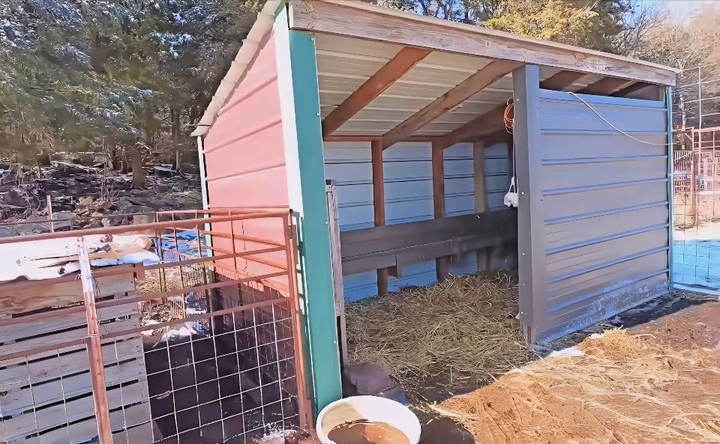
Ventilation and Airflow
Proper ventilation is crucial in a goat shelter to maintain a healthy environment. Here's how you can ensure good airflow:
Keep Air Moving
- Windows: Install windows that can be opened or closed depending on the weather.
- Vents: Place vents near the roof to let warm air escape.
Balance is Key
- Avoid Drafts: While ventilation is important, avoid making drafts, especially in cold weather.
- Adjustable Openings: Have doors or panels that can be adjusted for more or less airflow.
Monitor Air Quality
- Clean Regularly: Keep the shelter clean to prevent ammonia build-up from waste.
- Check for Mold: Good airflow helps prevent mold and mildew, which are harmful to goats' respiratory systems.
Lighting and Electrical Considerations
Lighting and electricity can enhance a goat shelter, but they must be used safely:
Natural Light
- Windows: Allow for plenty of natural light to keep the shelter bright and reduce the need for artificial lighting.
Artificial Lighting
- LED Lights: Use LED lights for energy-efficient, long-lasting illumination.
- Timers: Consider timers to regulate light, simulating natural day and night cycles.
Electrical Safety
- Professional Installation: Have any electrical work done by a qualified electrician.
- Protect Wires: Ensure all wiring is encased and out of reach of the goats.
By focusing on these aspects, you'll build a shelter that's not only comfortable but also promotes the health and well-being of your goats.
FAQs About DIY Goat Shelter
Discover essential FAQs about DIY goat shelters, covering design, materials, and best practices for building a safe, cozy space for your goats.
A DIY goat shelter should provide protection from the elements, be well-ventilated, and be sturdy enough to withstand the goats’ playful nature. It should have a dry floor, preferably elevated from the ground, and walls to block wind and rain. The shelter must be spacious enough for all your goats to rest comfortably.
Each adult goat requires about 20 square feet of space. When planning your shelter, consider the size of your herd and ensure there is ample room for all goats to move around freely without overcrowding.
Absolutely! Goats love to climb and play, so incorporating features like ramps or platforms can provide enrichment. Some designs include a slanted roof or multi-level structures that allow goats to jump and play while still offering shelter.
Insulation is key for keeping goats warm during colder months. You can insulate the shelter with straw bedding, which can be easily replaced when soiled. Ensure the shelter is draft-free but still ventilated to prevent moisture buildup, which can lead to health issues.
Regular maintenance and cleaning are crucial for the health of your goats. Remove soiled bedding, such as straw or wood shavings, daily to prevent the buildup of ammonia and bacteria. Monthly, inspect the shelter for any structural damage or hazards, and make necessary repairs. It's also a good idea to disinfect the shelter periodically with a mild, non-toxic cleaner to keep the environment sanitary. Always ensure fresh, clean bedding is available for your goats to rest on.
Final Thoughts:
In conclusion, building a cheap DIY goat shelter using recycled materials is a practical and eco-friendly solution for your farm. By reusing items you may already have, you can build a comfortable and durable home for your goats without spending a fortune. Not only is it a cost-effective option, but it also promotes sustainability. Keep these simple tips in mind, and your goats will have a secure and affordable shelter in no time.


